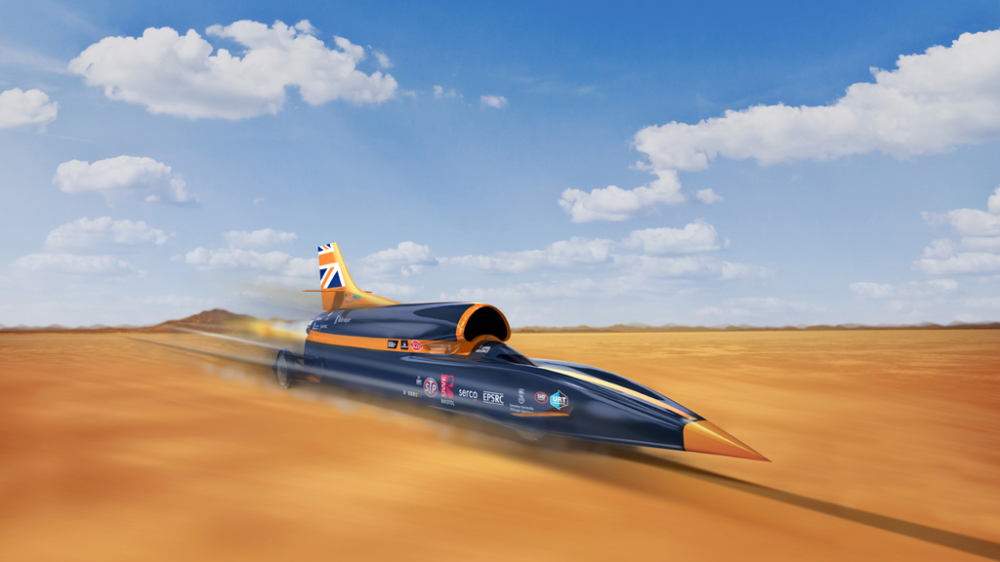Unit 4: Approaching to turn left
Unit 5: Approaching to turn right
Unit 6: Emerging to turn left and right

Unit 4: Approaching to turn left
Unit 5: Approaching to turn right
Unit 6: Emerging to turn left and right


This page contains general information about speed and position that is applicable to every single lesson that you teach.
Ensuring that learners drive at an appropriate speed and adopt a correct road position are probably the most two important practical control issues that an instructor has to deal with, after all, although there might be mitigating circumstances, when drivers crash its because they are going too fast for the situation and/or run out of space
You need to be fully familiar with the information on the pages linked below and with all aspects of positioning related to lanes and road markings.
At DriverActive - in relation to the picture of the 'Bloodhound' above- it says:
"If a vehicle fails mechanically at 400+ mph on a salt flat, the driver will be safe, as long as the vehicle doesn't flip over. This is because there is lots of space with nothing to crash into.
But on the other hand...
If a driver runs out of space at a speed as low as 3 mph on the local high street there is a risk of doing severe damage to a young or old pedestrian - possibly resulting in a fatal accident."
This is a basic message for speed and positioning that all learners need to be aware of. However going too fast is not the only 'speed' problem that you will have to deal with. It can be dangerous to drive too slow or fail to take safe opportunities to proceed (for example when the road is clear at a junction).
You can help or hinder a learner's ability to drive at a safe speed for the conditions by your choice of lesson route. If you move learners on to busy roads or high speed roads before they are ready you can expect to encounter irate drivers behind and anxious learners in your car. In some respect this means that you need to match your routes to the learner's ability to drive at a safe speed and to make decisions for themselves.
In 'general driving' positioning can be either too close or wide of the kerb or other boundary. Your learners need to recognise the link between observation, steering and positioning.
Other positioning mistakes include incorrect lane use during normal driving and in one-way-streets and positioning at junctions.
The DVSA says...
"You should position the vehicle sensibly, normally well to the left. Keep clear of parked vehicles and position correctly for the direction that you intend to take. Where lanes are marked, keep to the middle of the lane and avoid straddling lane markings. Do not change lanes unnecessarily."
Your goal:
To ensure that your learners understand the importance of, and is able to, drive at a safe speed for the prevailing conditions and maintain and appropriate road position.
Learner's goals:
To understand the need for and demonstrate appropriate use of speed and correct road positioning including:
Keeping an appropriate distance from the kerb or other road or lane boundary
Knowledge of speed limits
Knowledge of stopping distances
Driving at a speed that is safe and appropriate for the road and traffic conditions
Driving at a speed that is safe and appropriate allowing for personal circumstances such as health and mood
You need to gather information about the specific problems by watching your learner closely and having a full awareness of the vehicle's position at all times.
Both speed and position will be taught across a range of different lessons; it's unlikely that you will have a dedicated lesson in your syllabus for these topics.
Because this area of training is not limited to a specific situation we have not included general teaching notes - our information gives general guidance on the subject.
Note: The cause of many issues relating to speed and positioning lies in the learner's observation and interpretation of what they see around them. Make sure that your customers are fully familiar with the information about visual scanning and the importance of keeping the eyes moving given in the Steering Lesson at DriverActive. Practical exercises and demonstration based on the scanning information can help learners to maintain an appropriate speed and position.
Learners will often be 'pre-programmed' for speed before they arrive in your car, that is, they will have an 'in-built' model of how the car should feel. The problem is, however, that their 'feel for speed' might be based on the less than satisfactory driving of their parents and friends. To understand more about this see this article about using demonstration.
You studied safe speed and safe space while preparing for Part-Two. Revise these two subjects now thinking about the ways that you can teach the information to your customers
Next: Some speed and positioning issues...